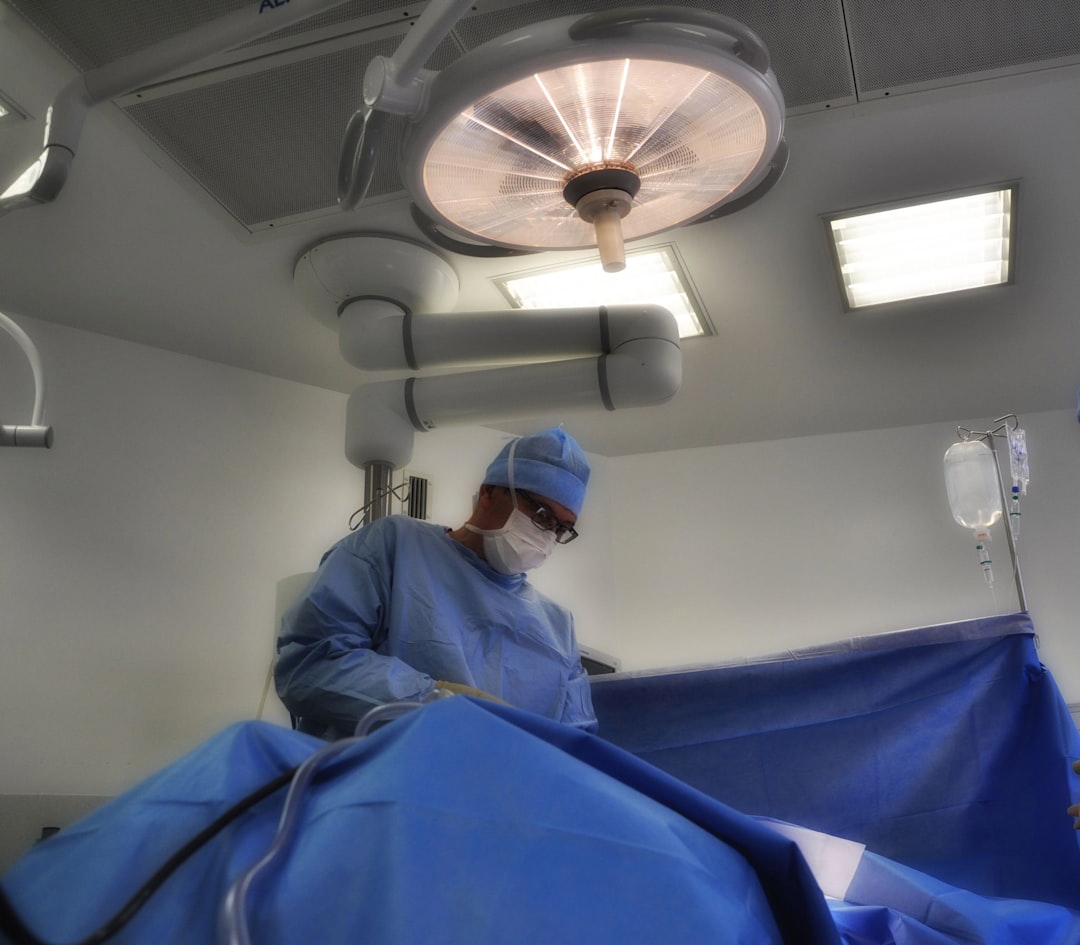
An Anesthesiologist Assistant (AA) is a highly trained healthcare professional who plays a crucial role in the administration of anesthesia during surgical procedures. Working under the supervision of licensed anesthesiologists, AAs are integral to the perioperative care team, ensuring that patients receive safe and effective anesthesia management. Their responsibilities encompass a wide range of tasks, from preoperative assessments to intraoperative monitoring and postoperative care.
This role is particularly vital in complex surgical environments where precision and expertise are paramount. The profession of Anesthesiologist Assistant emerged in the United States in the late 1960s as a response to the growing need for anesthesia providers. AAs are distinct from nurse anesthetists, as they are specifically trained to work alongside anesthesiologists rather than independently.
This collaborative model enhances patient safety and optimizes anesthesia care, allowing anesthesiologists to focus on more complex aspects of patient management while AAs handle routine tasks. The role of an AA is characterized by a blend of technical skills, clinical knowledge, and the ability to work effectively within a multidisciplinary team.
Key Takeaways
- An anesthesiologist assistant is a healthcare professional who works under the supervision of an anesthesiologist to provide anesthesia care to patients before, during, and after medical procedures.
- Education and training requirements for an anesthesiologist assistant typically include a bachelor’s degree, completion of an accredited anesthesiologist assistant program, and passing a national certification exam.
- Job responsibilities and duties of an anesthesiologist assistant may include conducting patient assessments, administering anesthesia, monitoring patients during procedures, and providing post-anesthesia care.
- Anesthesiologist assistants can work in a variety of settings, including hospitals, surgical centers, and pain management clinics, and may also have opportunities for research and teaching.
- The salary and job outlook for anesthesiologist assistants is generally favorable, with a median annual salary of around 0,000 and a projected job growth rate of 21% from 2018 to 2028.
Education and Training Requirements
To become an Anesthesiologist Assistant, candidates must complete a rigorous educational pathway that typically includes a bachelor’s degree followed by a master’s degree in anesthesiology. The undergraduate degree often focuses on the sciences, with coursework in biology, chemistry, physics, and mathematics providing a solid foundation for advanced study. Many aspiring AAs also gain experience in healthcare settings, such as working as paramedics or in other clinical roles, which can enhance their understanding of patient care and the medical environment.
The master’s program for Anesthesiologist Assistants usually spans two to three years and includes both classroom instruction and clinical training. The curriculum covers essential topics such as pharmacology, physiology, anatomy, and anesthesia techniques. Students engage in hands-on training through clinical rotations in various surgical specialties, allowing them to apply their knowledge in real-world settings.
Upon completion of their education, graduates must pass a national certification examination to practice as AAs, ensuring they meet the high standards required for this specialized field.
Job Responsibilities and Duties

Anesthesiologist Assistants have a diverse array of responsibilities that are critical to the success of surgical procedures. One of their primary duties is conducting preoperative assessments, which involve evaluating patients’ medical histories, current medications, and any potential risks associated with anesthesia. This assessment is vital for developing an individualized anesthesia plan tailored to each patient’s unique needs.
AAs also play a key role in educating patients about the anesthesia process, addressing any concerns they may have, and ensuring they understand what to expect during their surgical experience.
This includes preparing and monitoring anesthesia equipment, calculating dosages, and ensuring that patients remain stable throughout the procedure.
They continuously assess patients’ vital signs, such as heart rate, blood pressure, and oxygen saturation levels, making real-time adjustments to anesthesia as necessary. Postoperatively, AAs monitor patients as they recover from anesthesia, managing any complications that may arise and providing pain management solutions to enhance patient comfort.
Work Settings for Anesthesiologist Assistants
| Work Setting | Percentage |
|---|---|
| Hospitals | 60% |
| Outpatient Care Centers | 20% |
| Physician Offices | 10% |
| Specialty Hospitals | 5% |
| Government | 5% |
Anesthesiologist Assistants work in a variety of healthcare settings, primarily within hospitals and surgical centers. In large hospitals, AAs may be part of a dedicated anesthesia department that collaborates with surgeons and other specialists across multiple surgical disciplines. This environment allows them to gain exposure to a wide range of procedures and patient populations, enhancing their clinical skills and experience.
In addition to hospitals, AAs may also find employment in outpatient surgical centers where elective procedures are performed. These facilities often focus on same-day discharge surgeries, requiring AAs to be adept at managing anesthesia for patients who may not require extensive postoperative care. Furthermore, some AAs may work in pain management clinics or academic institutions where they contribute to research and education in the field of anesthesiology.
The diversity of work settings provides AAs with opportunities to specialize in areas such as pediatrics, geriatrics, or pain management.
Salary and Job Outlook
The salary for Anesthesiologist Assistants can vary significantly based on factors such as geographic location, years of experience, and the type of healthcare facility in which they work. According to recent data from the Bureau of Labor Statistics (BLS), the median annual wage for AAs is competitive within the healthcare sector, often exceeding six figures. In metropolitan areas with high demand for anesthesia services, salaries can be even higher due to the cost of living and competition among employers.
The job outlook for Anesthesiologist Assistants is promising, with employment opportunities expected to grow as the healthcare industry continues to expand.
Additionally, as the population ages and requires more medical interventions, the need for skilled anesthesia providers will likely continue to rise.
This trend suggests that pursuing a career as an AA can offer both financial stability and job security.
Certification and Licensure

National Certification
This certification demonstrates that an Anesthesiologist Assistant has met the rigorous standards set forth by the profession and possesses the necessary knowledge and skills to provide safe anesthesia care.
In addition to national certification, Anesthesiologist Assistants must also obtain licensure in the state where they intend to practice. Each state has its own requirements for licensure, which may include submitting proof of education and certification, passing additional examinations, or fulfilling continuing education requirements.
Licensure Requirements
Maintaining certification typically requires Anesthesiologist Assistants to complete ongoing education credits every two years and pass a recertification exam every six years.
Lifelong Learning
This commitment to lifelong learning ensures that Anesthesiologist Assistants remain current with advancements in anesthesia practices and patient care.
Advantages and Challenges of the Profession
The profession of Anesthesiologist Assistant offers numerous advantages that attract individuals to this career path. One significant benefit is the opportunity to work closely with anesthesiologists and other healthcare professionals in a dynamic surgical environment. This collaboration fosters a sense of teamwork and camaraderie while allowing AAs to contribute meaningfully to patient care during critical moments.
Additionally, the role often provides a high level of job satisfaction due to the direct impact AAs have on patient outcomes. However, like any profession in healthcare, being an Anesthesiologist Assistant comes with its challenges. The work can be demanding and requires individuals to remain calm under pressure during high-stakes situations.
Long hours are common, particularly in surgical settings where procedures may extend beyond typical working hours. Furthermore, AAs must be prepared for the emotional toll that can accompany patient care, especially when dealing with complex cases or unexpected complications during surgery.
How to Pursue a Career as an Anesthesiologist Assistant
For those interested in pursuing a career as an Anesthesiologist Assistant, the journey begins with obtaining a relevant undergraduate degree that emphasizes science courses. Aspiring AAs should seek out programs that offer strong preparation for graduate studies in anesthesiology. Gaining experience in healthcare settings through internships or volunteer opportunities can also provide valuable insights into patient care dynamics and enhance one’s application for graduate programs.
Once equipped with a bachelor’s degree, candidates should research accredited master’s programs specifically designed for Anesthesiologist Assistants. Admission into these programs can be competitive; therefore, maintaining a strong academic record and obtaining letters of recommendation from professionals in the field can bolster one’s application. After successfully completing a master’s program and obtaining certification through the NCCAA examination, new graduates can begin their careers as AAs by applying for positions in various healthcare settings while continuing their professional development through ongoing education and training opportunities.
If you are interested in learning more about careers in the USA, specifically as an Anesthesiologist Assistant, you may want to check out the article “Hello World” on the Careers in the USA blog. This article provides a general overview of the website and the various career resources it offers. You can read more about it here.
FAQs
What is an Anesthesiologist Assistant?
An Anesthesiologist Assistant is a healthcare professional who works under the supervision of an anesthesiologist to provide anesthesia care to patients before, during, and after medical procedures.
What are the educational requirements to become an Anesthesiologist Assistant?
To become an Anesthesiologist Assistant, individuals typically need a bachelor’s degree and must complete a master’s level anesthesiologist assistant program accredited by the Commission on Accreditation of Allied Health Education Programs (CAAHEP).
What are the responsibilities of an Anesthesiologist Assistant?
An Anesthesiologist Assistant is responsible for conducting patient assessments, developing anesthesia care plans, administering anesthesia, monitoring patients during procedures, and providing post-anesthesia care.
Where do Anesthesiologist Assistants work?
Anesthesiologist Assistants can work in a variety of healthcare settings including hospitals, surgical centers, and other medical facilities where anesthesia services are provided.
What is the job outlook for Anesthesiologist Assistants in the USA?
According to the Bureau of Labor Statistics, the job outlook for Anesthesiologist Assistants is projected to grow much faster than average, with a 31% increase in employment from 2019 to 2029.



